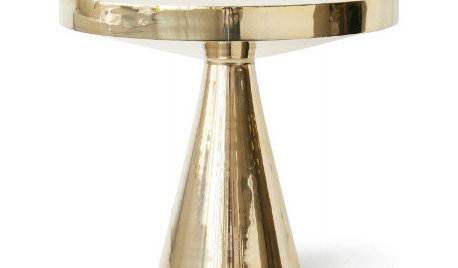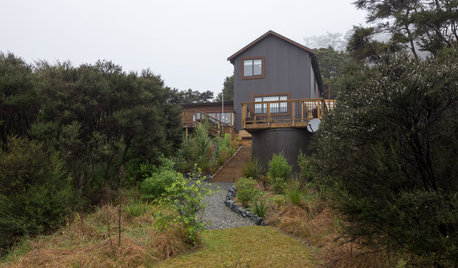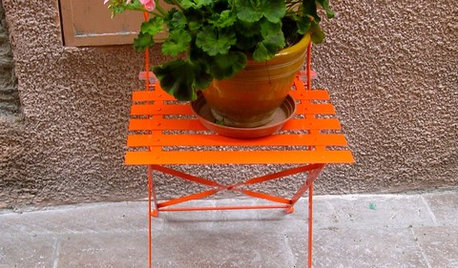Perched Water Tables
nallred91
12 years ago
Related Stories

ARCHITECTURE15 Intriguing Homes Perched Above the Earth
Set on stilts, propped on pilotis or cantilevered into the air, these residences rise to the occasion
Full Story
HOUZZ TOURSMy Houzz: Tropical Modern Casitas Perch in the Nicaraguan Hills
Efficient and tranquil, two small units on a sprawling compound have panoramic views and earth-friendly features
Full Story
GUESTHOUSESA Hideaway for All Ages Perched Among the Trees in Maine
A modern Adirondack ‘treehouse’ is designed as a place for playing games, reading, sleeping over and enjoying forest views
Full Story
DECORATING GUIDESOn Trend: End Tables Perch on Opposite Ends of Design
Sturdy or skinny and metallic or black, end tables for fall 2012 are going to extremes
Full Story
FEEL-GOOD HOMEDesigning for Pleasure: A Safe and Sound Perch
Canopy beds, low ceilings, high-back sofas: When it comes to comfort at home, we have something in common with our ancient ancestors
Full Story
HOMES AROUND THE WORLDMy Houzz: A Peaceful Retreat Perched in the Wilderness
A couple of chocolatiers find a secluded sanctuary in New Zealand to build the home of their dreams
Full Story
DESIGN DICTIONARYWater Table
A house's water table keeps wetness outdoors and adds architectural interest to a home's design
Full Story0

HOUSEKEEPINGHow to Remove Water Rings From Wood Tables
You may be surprised by some of these ideas for removing cloudy white water marks from wood surfaces
Full Story
GARDENING AND LANDSCAPINGPotted Plants Perk Up the Streets of Coastal France
Dotting a stairway or perched on a café table, plants in colorful pots and vibrant flowers make a picturesque scene in a town on the coast
Full Story
GARDENING FOR BUTTERFLIESBring on the Birds: Natural Habitat Ideas for Gardens of All Sizes
Provide nesting, watering and perching spots inspired by the Costa Rican jungle and watch the birds flock on over
Full Story




nallred91Original Author
tapla (mid-Michigan, USDA z5b-6a)
Related Professionals
Florham Park Landscape Contractors · Peoria Landscape Contractors · Pompano Beach Landscape Contractors · White Bear Lake Landscape Contractors · Wickliffe Landscape Contractors · Inver Grove Heights Solar Energy Systems · Mount Kisco Window Contractors · Watsonville Window Contractors · Peoria Fence Contractors · Goose Creek Fence Contractors · Issaquah Fence Contractors · Libertyville Fence Contractors · Tallahassee Fence Contractors · West Covina Fence Contractors · Fountain Valley Fence Contractorsnallred91Original Author
Ruby Chang
Ruby Chang